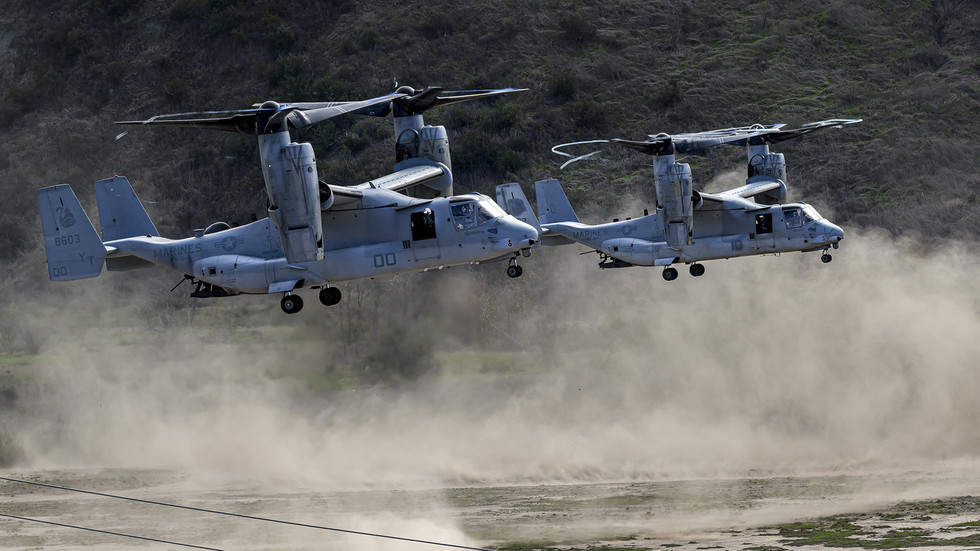The U.S. Defense Department has recently suspended all flights of the V-22 Osprey following a near-crash incident at Cannon Air Force Base in New Mexico. This decision is a precautionary measure stemming from safety concerns associated with the tiltrotor aircraft, which merges the agility of a helicopter with the speed and range of a turboprop plane. The V-22 Osprey has a storied history since its introduction in 1989, but this history includes multiple crashes resulting in 64 fatalities and 93 injuries, as reported by the Associated Press (AP). Each Osprey costs around $70 million and it serves as a crucial assault support aircraft for the U.S. Marine Corps, Navy, and the Air Force Special Operations Command (AFSOC). The decision to pause flights was made by Vice Admiral Carl Chebi from Naval Air Systems Command to prioritize safety amid ongoing concerns.
The recent near-crash incident did not involve any injuries, but it was attributed to a metal weakness similar to one implicated in a tragic crash in Japan last year, which resulted in eight deaths. This incident led to a previous three-month flight suspension for the Ospreys. Previous accidents have also highlighted the aircraft’s safety risks, including a situation where three U.S. Marines lost their lives during training exercises in Australia. Additionally, a crash in Norway in March 2022 claimed the lives of four crew members. These accidents underscore a troubling trend in the Osprey’s operational history, particularly emphasized in an extensive AP investigation revealing a worrying increase in serious safety incidents since 2019.
The AP report noted that the design flaws of the V-22 Osprey contribute to many of the safety challenges it faces. Its unique design features, such as relatively small propellers in ratio to the aircraft’s size, and the hybrid capabilities that require crews to monitor a multitude of systems, render it unforgiving to pilot error. These intrinsic design characteristics have put the aircraft at a heightened risk of malfunction and catastrophic failure during flights. While these safety concerns mount, the U.S. Marine Corps has expressed intentions to continue operating these aircraft until at least 2050, raising questions about the sustainability of such a decision in light of the recent findings.
In the wake of the AP’s analysis and revelations, several lawmakers have called for immediate action from Defense Secretary Lloyd Austin, urging him to ground the Osprey fleet entirely until a thorough investigation can be conducted into the ongoing safety issues. Their calls reflect a growing concern that the existing measures may not be sufficient to ensure the safety of military personnel operating these aircraft. The permanence of the fleet’s use can also be questioned in light of such persistent safety hazards, and it seems necessary to reevaluate the operational status of the Osprey given its troubled history.
Media reports and legislative response highlight a critical moment for the V-22 Osprey program and prompt discussions about accountability and safety in military aviation. As flight operations remain suspended, stakeholders are likely to propose comprehensive assessments and reforms aimed at addressing the aircraft’s flaws. Ensuring that service members operate within a safe environment must take precedence, and the ongoing scrutiny from the public and military officials underscores the sense of urgency in resolving these issues.
Ultimately, the future of the V-22 Osprey hinges on how effectively the U.S. military can navigate the safety challenges outlined in recent investigations and reports. As of now, the pause in flights serves as a vital measure that allows time for deeper analysis and corrective actions to be taken. With growing pressure from lawmakers and the public, there is hope that the military will address these longstanding issues head-on to ensure the safety of its personnel and restore confidence in one of its primary tiltrotor aircraft.

